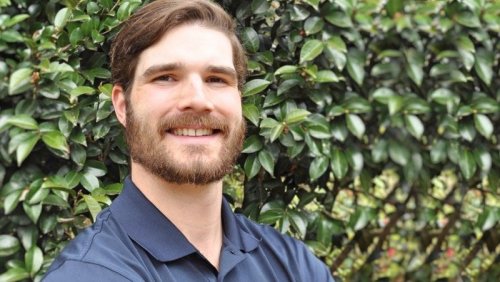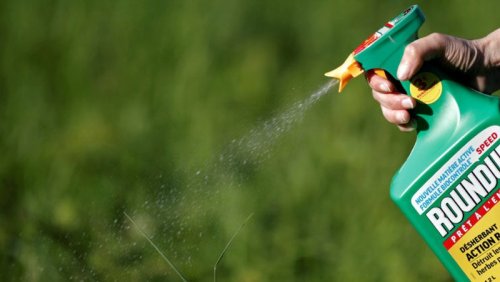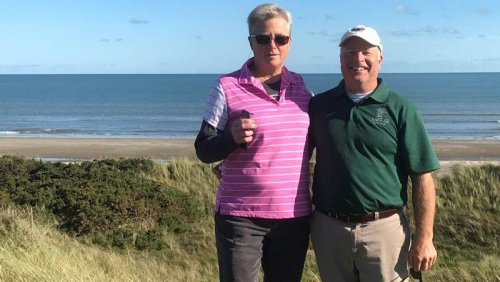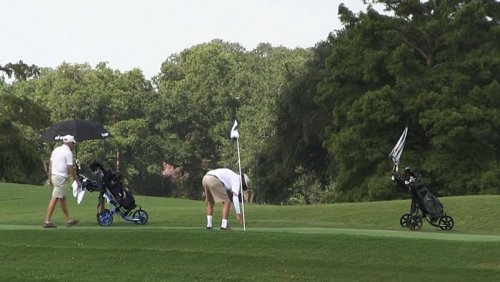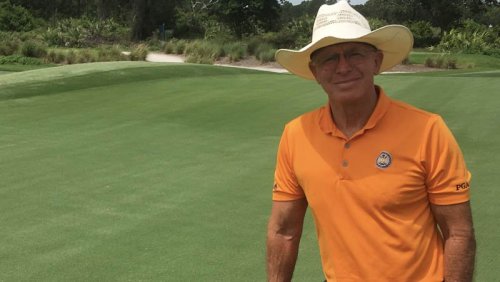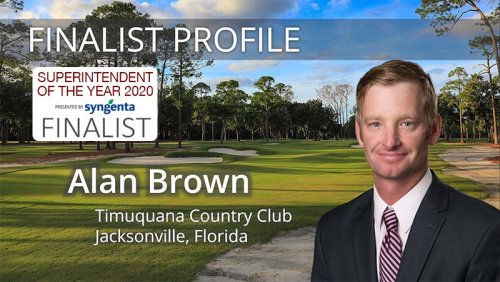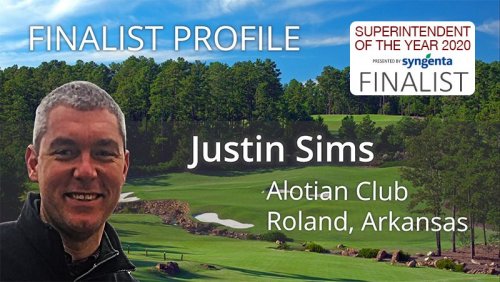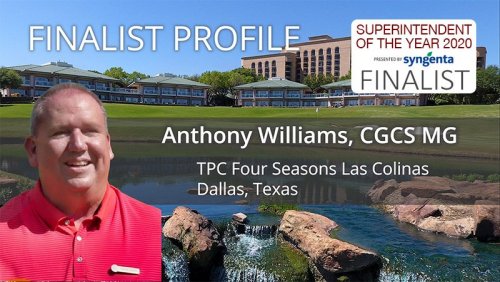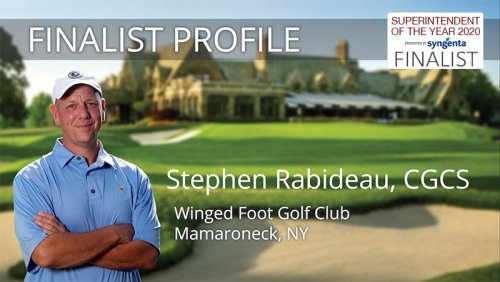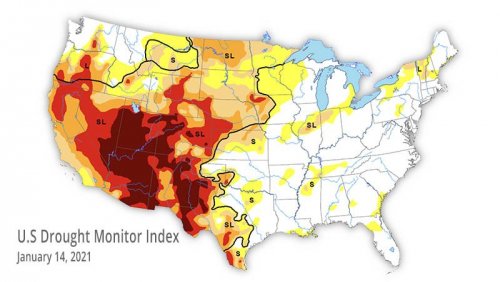

"No question, that was the most stressful time here I can remember," said former Winged Foot green chairman Dave Staudinger.
"Steve and I talked a couple of times every day, and he was at an all-time low. He and his team had worked so hard, and we didn't know if we were going to have the Open or if there was even going to be an Open."
Options entertained by the USGA including postponing the event, canceling it or moving it to later in the year at a warm-weather location. Ultimately, the Open was held in September at Winged Foot, and players raved about the conditions that Rabideau and his team provided after record play through the summer. For the way in which he held his team together through times of uncertainty, met member demands during a busy summer and provided Open conditions in September in New York, Rabideau was named the winner of the 2020 TurfNet Superintendent of the Year Award, presented by Syngenta.
"I think 2020 is a year nobody's going to forget," Rabideau said after being named the winner of the award. "Everybody faced things we didn't expect being thrown at us."
Rabideau was selected by a panel of judges from a list of finalists that included Alan Brown of Timuquana Country Club in Jacksonville, Florida; Chris Reverie of Allentown Municipal Golf Course in Allentown, Pennsylvania; Justin Sims of Alotian Club in Roland, Arkansas; and Anthony Williams of TPC Four Seasons in Irving, Texas.
Criteria on which nominees are judged typically include: labor management, maximizing budget limitations, educating and advancing the careers of colleagues and assistants, negotiating with government agencies, preparing for tournaments under unusual circumstances, service to golf clientele, upgrading or renovating the course and dealing with extreme or emergency conditions. However, this year, managing against Covid was the only challenge that mattered.
The winner typically is announced live at the Golf Industry Show, but was announced this year on Zoom due to Covid. As the winner, Rabideau will receive a Sonos Cinematic Surround Sound Audio System and Weatherproof Outdoor Sound System courtesy of Syngenta.
Before most knew anything about Coronavirus, Rabideau, his team and folks from the USGA were busy prepping Winged Foot for the Open. By mid-March, Gov. Andrew Cuomo had ordered non-essential workers to stay home, a decision that included the turf team at Winged Foot. Just like that, preparations for the Open stopped and the people from the USGA stopped work and left.
During the next month, the fate of the Open was unknown. The Masters and the PGA Championship rescheduled, and no decisions had yet been made on the British Open. There was talk of postponing the Open and leaving it at Winged Foot, canceling it outright or moving it to later in the year to a warm-weather location with Open experience, like Torrey Pines or Pebble Beach. It was not until the first week of April when the USGA settled on playing the Open at Winged Foot, but postponing the tournament until September.
"Later in the year, and a west coast host site was on the table right up until we announced we would shift to September," said Craig Annis, director of brand management for the USGA. "The September date came with the presumption that Winged Foot was the host site. There were certainly times with the eb and flow of Covid that we had to consider alternatives after that, but our goal was always to have it at Winged Foot."
Winged Foot was like so many other places that enjoyed record play throughout 2020. Producing Open conditions on cool-season grass at the end of summer is another matter entirely. Rabideau directed credit to his crew, calling his current unit "the best I've ever had."
"It was a long summer, when guys were trying to get ready for the U.S. Open, all the letdowns, but at the end of it we were able and fortunate to have the Open and a successful Open," Rabideau said.
"I couldn't have done it without my staff and the support of friends and the support of volunteers who helped us throughout the Open."
Perhaps greater than growing lush U.S. Open rough in September in New York was the way Rabideau kep his team focused on daily play for members while first awaiting the fate of the tournament and second preparing for it.
"Hopefully, the game of golf is better for this. A lot more people played golf and we were fortunate enough to provide that service for people," Rabideau said. "We all did it with less staff, and all the other obstacles thrown at all superintendents, we persevered through it."
Previous winners of the award are:
Matt DiMase, The Abaco Club on Winding Bay, Cherokee, Great Abaco, Bahamas (2019)
Carlos Arraya, Bellerive Country Club, St. Louis, MO (2018)
Jorge Croda, Southern Oaks Golf Club, Burleson, TX, and
Rick Tegtmeier, Des Moines Golf and Country Club, West Des Moines, IA (2017)
Dick Gray, PGA Golf Club, Port St. Lucie, FL (2016)
Matt Gourlay, Colbert Hills, Manhattan, KS (2015)
Fred Gehrisch, Highlands Falls Country Club, Highlands, NC (2014)
Chad Mark, Kirtland Country Club, Willoughby, OH (2013)
Dan Meersman, Philadelphia Cricket Club (2012), Flourtown, PA
Paul Carter, The Bear Trace at Harrison Bay, Harrison, TN (2011)
Thomas Bastis, The California Golf Club of San Francisco, South San Francisco, CA (2010)
Anthony Williams, Stone Mountain (GA) Golf Club (2009)
Sam MacKenzie, Olympia Fields (IL) Country Club (2008)
John Zimmers, Oakmont (PA) Country Club (2007)
Scott Ramsay, Golf Course at Yale University, New Haven, CT (2006)
Mark Burchfield, Victoria Club, Riverside, CA (2005)
Stuart Leventhal, Interlachen Country Club, Winter Park, FL (2004)
Paul Voykin, Briarwood Country Club, Deerfield, IL (2003)
Jeff Burgess, Seven Lakes Golf Course, Windsor, Ontario (2002)
Kip Tyler, Salem Country Club, Peabody, MA (2001)
Kent McCutcheon, Las Vegas (NV) Paiute Golf Resort (2000)
- Read more...
- 5,386 views

